Tell us a little bit about your work.
I am a documentary photographer. I have started from journalism, then turned to documentary photography and now I do also some other things. Currently I am doing various experiments, which are all based on stories from real life. Their formats are quite experimental; they are out of the formats of documentary photography. I have done a lot during the first decade of my career, so I find that I’ve gained the right to conduct experiments. My works were published in various foreign magazines, for a while I have also been working on orders, but today I am occupied only with my projects. Though from time to time I still may accept orders, but their idea should meet my ideas or be the continuation of them. I am an independent documentary photographer and I also teach. Since March we have launched lessons here at the library. Suren Manvelyan has groups for beginners. Mine is a group for experimental photography, so here I profess with a mixed program. The latter consists of programs, which I used to work with in the past: the programs of World Press Photo (in 2006 I was nominated and passed Training for Trainers course organized by them) New York University, where I studied and finally some personal ideas. Consequently I consider my group to be experimental. Let’s see what happens.
Let’s speak about the café-library.
The library opened on August 10 with an exhibition. It is actually a library and not a café-library, as there are no waiters, though we have self-service and people can have a cup of tea here.
To what extent is the format of this kind of library accepted abroad and particularly in our region?
 In Caucasus it is the only photo-book library. There are undoubtedly such libraries in other countries, but not that many, as here we talk about big expenses. Being a photographer for the rest of my life and being quite aware of this sphere I have seen maybe two big photo-book libraries. The first is ICP – International Center of Photography in New York, which is one of the best and most expensive places to study photography all over the world. They have a large library, as there are enough means for that. The other one is Arab Image Foundation, established in Beirut in 1997, where I conducted a one-month research last year. There is a magnificent library, where along with published materials one has also access to online data. When I was planning to open this place, I was oftentimes asked why I emphasized the function of library. For a while I also hesitated whether it was worth taking the risk, but my objective was to have such a library, which, by the way, will be replenished with a big number of new books in a year. Finally, one should have done it someday. It is still unknown to which direction the library will develop in the future, but, however, I try to keep the balance for this place not to become a café. There is a sad fact, but it is quite natural. People tend to say that it is typically Armenian, but I do not agree: most of them come here for the café, especially for wine, they like to sit in the balcony and spend time together. But it is normal, and has nothing to do with Armenians. In the above mentioned libraries there were almost no people, I was alone there. And it is not about photo-book libraries, but about libraries in general, which are not popular places.
In Caucasus it is the only photo-book library. There are undoubtedly such libraries in other countries, but not that many, as here we talk about big expenses. Being a photographer for the rest of my life and being quite aware of this sphere I have seen maybe two big photo-book libraries. The first is ICP – International Center of Photography in New York, which is one of the best and most expensive places to study photography all over the world. They have a large library, as there are enough means for that. The other one is Arab Image Foundation, established in Beirut in 1997, where I conducted a one-month research last year. There is a magnificent library, where along with published materials one has also access to online data. When I was planning to open this place, I was oftentimes asked why I emphasized the function of library. For a while I also hesitated whether it was worth taking the risk, but my objective was to have such a library, which, by the way, will be replenished with a big number of new books in a year. Finally, one should have done it someday. It is still unknown to which direction the library will develop in the future, but, however, I try to keep the balance for this place not to become a café. There is a sad fact, but it is quite natural. People tend to say that it is typically Armenian, but I do not agree: most of them come here for the café, especially for wine, they like to sit in the balcony and spend time together. But it is normal, and has nothing to do with Armenians. In the above mentioned libraries there were almost no people, I was alone there. And it is not about photo-book libraries, but about libraries in general, which are not popular places.  By offering tea or coffee one invites people. When I was opening this place, my aim was not to create a space for photographers, for it is a functioning library, which will advance in the future. The second function of this photo-book library will be education; the third will be the gallery, which is, for sure, of tertiary importance, because the opening of a gallery, of a high quality exhibition requires big expenses. When one organizes an exhibition, it means there are wealthy people appreciating art that are ready to purchase an art piece. So, by selling two photos you can continue working. In such a way the artist becomes financially well-off, but here things are different. The gallery has a tertiary meaning and its function is to tell professional photographers about printing, namely where and how to print, how to represent the conception of one’s exhibition, but the thing is that the space here is too small for a normal exposition.
By offering tea or coffee one invites people. When I was opening this place, my aim was not to create a space for photographers, for it is a functioning library, which will advance in the future. The second function of this photo-book library will be education; the third will be the gallery, which is, for sure, of tertiary importance, because the opening of a gallery, of a high quality exhibition requires big expenses. When one organizes an exhibition, it means there are wealthy people appreciating art that are ready to purchase an art piece. So, by selling two photos you can continue working. In such a way the artist becomes financially well-off, but here things are different. The gallery has a tertiary meaning and its function is to tell professional photographers about printing, namely where and how to print, how to represent the conception of one’s exhibition, but the thing is that the space here is too small for a normal exposition.
In this small room I try to show that it is possible to juxtapose inexpensive and costly printings, for instance in our library I represent cheap and small stickers next to expensive photo-printings. And although I do not accept cheap printing, in this small space it would be impossible to exhibit this series in a different way, consequently I brought certain balance to the exhibition, serving as an example for those photographers, who, being wonderful photographers, nevertheless are absolutely unaware of the printing, formats etc. They of course would like to represent their works here, but I always note, that before it as the concept, as well as the general management of the exposition and the quality of printing must be elaborated. 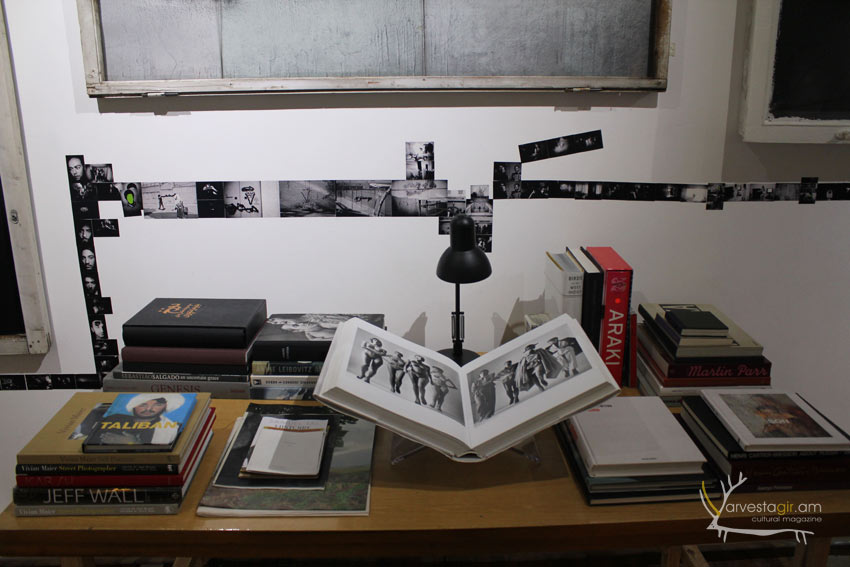 In this sense we have done an interesting work with Arthur Lumen, who held an exhibition here. He printed his photos in Tbilisi following my advice. The overall management of the exhibition was also different from the one he had at NPAK. Together we tried to offer creative solutions and setup putting photos into interesting frames and forms, as well as adding audio interviews, to the post-production of which I had contributed. Hence, the visitors, who were not photographers or have never been to such kind of museums of contemporary art as Pompidou or MOMA, had the opportunity to see that a photo could also be used in the format of interviews[1]. This place and these books are not for the photographers, but are for those people, who have no idea of photography. When I was opening this library, my aim was not to satisfy an exact group of people. Those photographers, whom I was working with, for instance Arthur Lumen, Davit Galstyan or Armen Aghayan, are all aware of photography news and have an access to them through internet. They definitely can come here and leaf through the books, but personally for me it is more essential having visitors who are completely unaware of photography and do not appreciate it.
In this sense we have done an interesting work with Arthur Lumen, who held an exhibition here. He printed his photos in Tbilisi following my advice. The overall management of the exhibition was also different from the one he had at NPAK. Together we tried to offer creative solutions and setup putting photos into interesting frames and forms, as well as adding audio interviews, to the post-production of which I had contributed. Hence, the visitors, who were not photographers or have never been to such kind of museums of contemporary art as Pompidou or MOMA, had the opportunity to see that a photo could also be used in the format of interviews[1]. This place and these books are not for the photographers, but are for those people, who have no idea of photography. When I was opening this library, my aim was not to satisfy an exact group of people. Those photographers, whom I was working with, for instance Arthur Lumen, Davit Galstyan or Armen Aghayan, are all aware of photography news and have an access to them through internet. They definitely can come here and leaf through the books, but personally for me it is more essential having visitors who are completely unaware of photography and do not appreciate it.
Do you have an intention to turn your library into a cultural center? For, as far as we know, you offer place for film screenings and lectures.
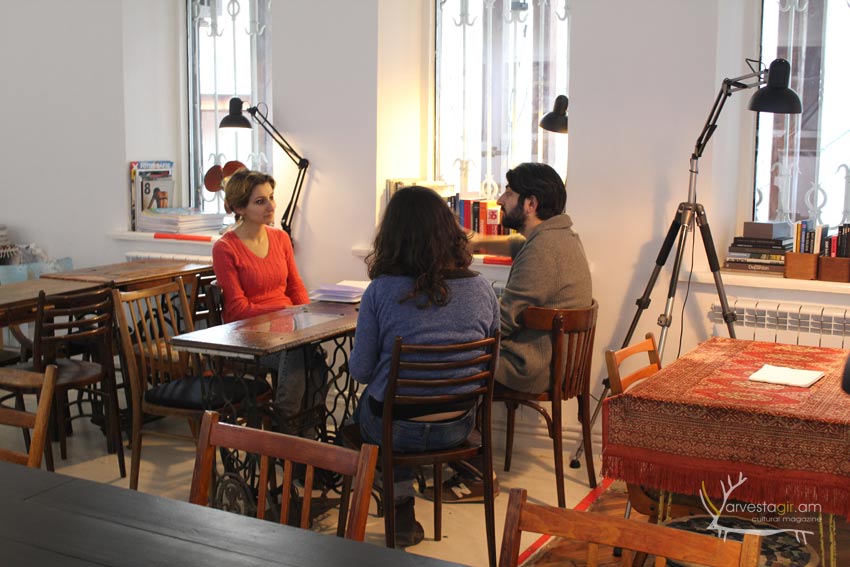 I would like my library to become a cultural center in the frames of photography, although the events organized here did not have concerns with photography. As the photography life in Yerevan is not so active and photo-book presentations are seldom held, we opened our doors also for film events and screenings, especially for the ones filmed by young authors. And actually yes, I would like my library to become a cultural center, a place for artists to gather, but, however, there is a variety of such places, and I would like the events to be connected exactly with photography. The latter is not easy, for in Yerevan there are not so many events being held, which complicates everything even more. Fortunately, we have started the photography school, and due to that fact more people will come and liven up this place. We have a Photographers Association, which tries to do something, but, nevertheless, in my personal opinion it does not function properly. Biayna Mahari, Suren Manvelyan and other young photographers formed another group, which is more active online. This group does great work, although they still have a way to go. They gather at the library, and now I must try to gather them here every week.
I would like my library to become a cultural center in the frames of photography, although the events organized here did not have concerns with photography. As the photography life in Yerevan is not so active and photo-book presentations are seldom held, we opened our doors also for film events and screenings, especially for the ones filmed by young authors. And actually yes, I would like my library to become a cultural center, a place for artists to gather, but, however, there is a variety of such places, and I would like the events to be connected exactly with photography. The latter is not easy, for in Yerevan there are not so many events being held, which complicates everything even more. Fortunately, we have started the photography school, and due to that fact more people will come and liven up this place. We have a Photographers Association, which tries to do something, but, nevertheless, in my personal opinion it does not function properly. Biayna Mahari, Suren Manvelyan and other young photographers formed another group, which is more active online. This group does great work, although they still have a way to go. They gather at the library, and now I must try to gather them here every week.
In last decades there is an increase in the number of people who have photo cameras, for instance, new Photography pages are being opened periodically on Facebook, what is your attitude to this phenomenon, which are the positive and negative sides of it, and are there positive or negative sides at all?
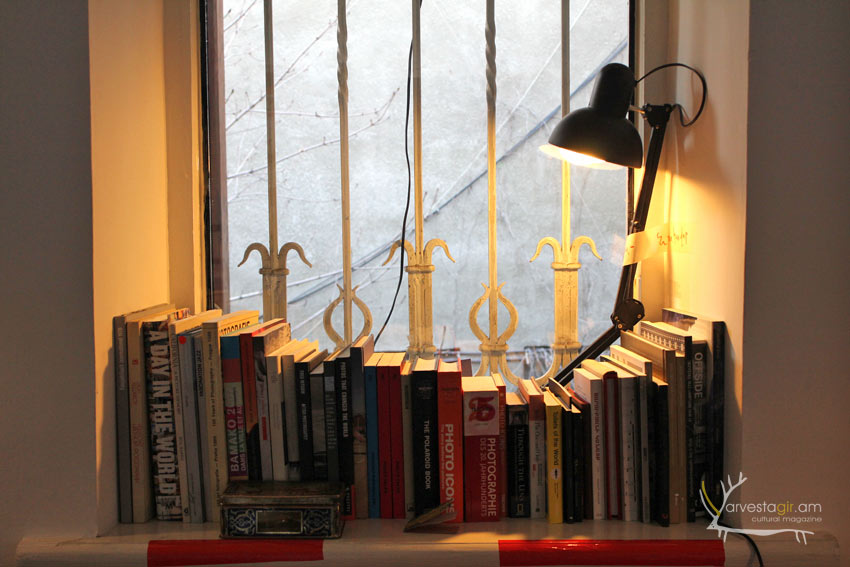 I have a positive attitude and do not see neither positive nor negative sides, and I am going mad when professional photographers find it as a negative phenomenon and criticize meaninglessly since I am for these scales. I have a positive attitude even to making photo by iPhone because the technique is never important. It is very good that it could be said in everyone’s hand there is a camera, and when there is a camera in a man’s hand that is when he/she can understand whether he/she wants to be engaged in the photography or not. I began to make photos because we had a photo camera at home, and it was not interesting for me to study at my university. If there was not a photo camera I could be a painter or I do not even know who. Nowadays the means are very important, and those means in the result remain means, i.e. tools. When you have a very powerful technique and want to become a photographer it is not important by what kind of camera you will start to make photos because nevertheless it does not make you a better photographer; you will just know a good technique. The main point is what you want to say, what you represent to people. Thus you can do it both by using iPhone if you understand the concept and by employing a very good technique. Therefore the technique remains always both at the beginning and at the end just a tool and not more. If you have so many fantastic ideas and have no money for a qualitative camera good photographers will always lend you a camera for implementing your idea with pleasure. For example, now if one asks me whether I will give my camera to him I would say no but if he/she tells about his/her idea, naturally I would give it, and it is possible that I could even give it as a present; the most important thing is the idea. But no, I will not give as a present (laughs). Besides, the big number of the photographers has many positive sides; firstly, many people have camera, and you see the photo series made by them in Internet, and if you look deeper as a professional who knows history very well, I mean the history of photo and art, you understand that the number of good ideas does not grow, it is the same or maybe even has reduced. Thus there are many nice, cool photos, which does not mean that they are good ones. It is good that people make photos and if a person makes it, one day he/she will do something better.
I have a positive attitude and do not see neither positive nor negative sides, and I am going mad when professional photographers find it as a negative phenomenon and criticize meaninglessly since I am for these scales. I have a positive attitude even to making photo by iPhone because the technique is never important. It is very good that it could be said in everyone’s hand there is a camera, and when there is a camera in a man’s hand that is when he/she can understand whether he/she wants to be engaged in the photography or not. I began to make photos because we had a photo camera at home, and it was not interesting for me to study at my university. If there was not a photo camera I could be a painter or I do not even know who. Nowadays the means are very important, and those means in the result remain means, i.e. tools. When you have a very powerful technique and want to become a photographer it is not important by what kind of camera you will start to make photos because nevertheless it does not make you a better photographer; you will just know a good technique. The main point is what you want to say, what you represent to people. Thus you can do it both by using iPhone if you understand the concept and by employing a very good technique. Therefore the technique remains always both at the beginning and at the end just a tool and not more. If you have so many fantastic ideas and have no money for a qualitative camera good photographers will always lend you a camera for implementing your idea with pleasure. For example, now if one asks me whether I will give my camera to him I would say no but if he/she tells about his/her idea, naturally I would give it, and it is possible that I could even give it as a present; the most important thing is the idea. But no, I will not give as a present (laughs). Besides, the big number of the photographers has many positive sides; firstly, many people have camera, and you see the photo series made by them in Internet, and if you look deeper as a professional who knows history very well, I mean the history of photo and art, you understand that the number of good ideas does not grow, it is the same or maybe even has reduced. Thus there are many nice, cool photos, which does not mean that they are good ones. It is good that people make photos and if a person makes it, one day he/she will do something better. 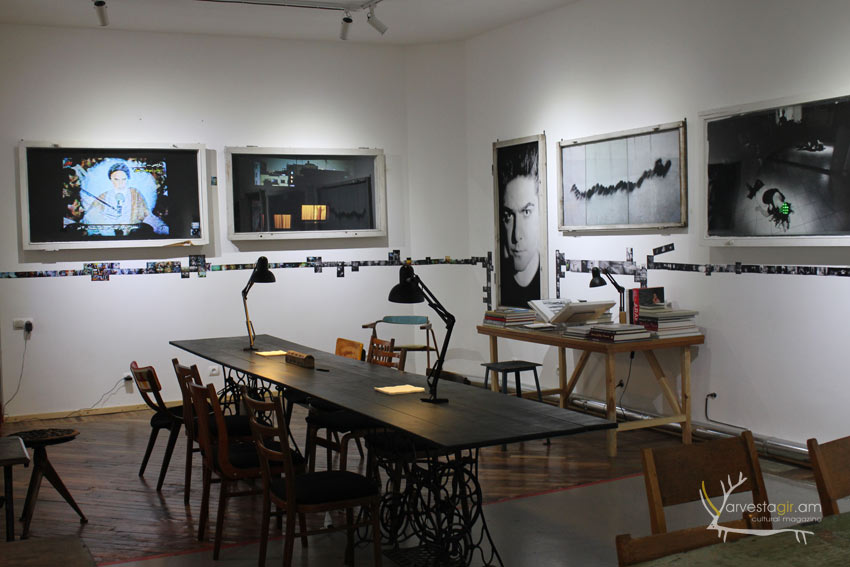 There is a growth, i.e. if you go deeper profound works are not created, the quality is the same neither increasing nor decreasing; like if 100 years ago there were ten people with good ideas and there was no camera; people were writing books, now there are a lot of cameras and likewise ten people will make photo with a good idea, others will continue doing something trivial. However, it is good that there are means by which a person can understand, for example I have friends who make photos by their cell phones and tell me “look, what I have photographed” or “what a nice photo my daughter has made”. Sometimes you see that he/she made a nice photo and he/she does not think about buying a photo camera and posts his/her iPhone’s photos on Facebook all day but then you see that one year after he bought a photo camera; it is due to the iPhone that he/she decided to buy a camera since if not iPhone probably he would be engaged in something else, besides that, since he is far from the world of photo you cannot say for sure whether one is a good photographer or just is in a process of growth. The second positive tendency is its huge scales. There are professional photographers complain, and there are ones who do not complain at all; I do not complain. It is a challenge for us in order to understand what we should do to be stronger than them, since the up growth is powerful. Now every beginner has a digital camera. Working for three-four years as a professional photographer I did not have such camera. I was dreaming about having that kind of photo camera, there were three-four photo cameras like that in the city, for instance Zaven Khachikyan had, and we were speechless seeing it. I have worked for three-four years with bad technique which had drawbacks in many ways.
There is a growth, i.e. if you go deeper profound works are not created, the quality is the same neither increasing nor decreasing; like if 100 years ago there were ten people with good ideas and there was no camera; people were writing books, now there are a lot of cameras and likewise ten people will make photo with a good idea, others will continue doing something trivial. However, it is good that there are means by which a person can understand, for example I have friends who make photos by their cell phones and tell me “look, what I have photographed” or “what a nice photo my daughter has made”. Sometimes you see that he/she made a nice photo and he/she does not think about buying a photo camera and posts his/her iPhone’s photos on Facebook all day but then you see that one year after he bought a photo camera; it is due to the iPhone that he/she decided to buy a camera since if not iPhone probably he would be engaged in something else, besides that, since he is far from the world of photo you cannot say for sure whether one is a good photographer or just is in a process of growth. The second positive tendency is its huge scales. There are professional photographers complain, and there are ones who do not complain at all; I do not complain. It is a challenge for us in order to understand what we should do to be stronger than them, since the up growth is powerful. Now every beginner has a digital camera. Working for three-four years as a professional photographer I did not have such camera. I was dreaming about having that kind of photo camera, there were three-four photo cameras like that in the city, for instance Zaven Khachikyan had, and we were speechless seeing it. I have worked for three-four years with bad technique which had drawbacks in many ways. 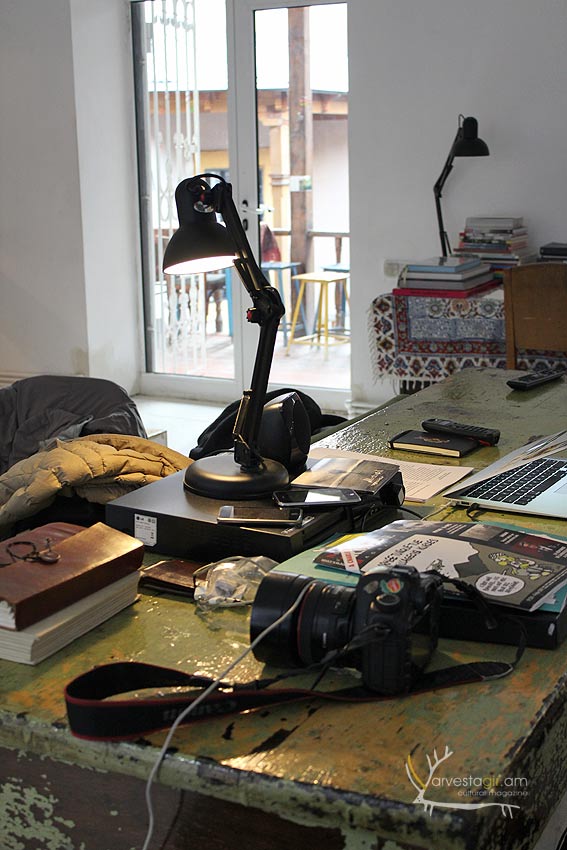 At present everything goes a lot faster, i.e. now the beginner does technically the same work as I do or can do after practicing for a year; the thing that I have achieved due to seven, maybe six years of work. There is a speed which is good and when you see this kind of development you tell yourself “okay, what can I do in order to deepen more and achieve a higher level”; the energy is needed in order to be able to do that, thus if you cannot do that it means that they are better. The following generation should outmatch the previous one because new generation is always stronger than the previous, it always learns from the previous one. For example, if we talk about Einstein who was a genius physic; his students were smarter because they knew what he had known before. There is logic; if I am a person who wants that something develops here the first of my goals should be that I, being honest with myself, reach my goal and have an apprentice (student). And that student would be better than me since if I always remained the strongest it would mean that I had never been a good professional; did not give and had kept for myself. I want to say that the beginners are fearsome for us in order to improve more. Many do not stand it and remain at the same place, for instance, now when I do any project I work both on the sound, on the portfolio and make a video in general, since I know that I can use that in the photo or in the exhibition. I write also but not as a journalist, I follow new tendencies, for instance, the innovations in calligraphy in order to apply it to the photo, look through comics as well. I work more on myself than young photographers now, I know that for sure, because I notice at once when someone works hard on himself/herself. However, I know that I will convey my knowledge to the other person, since by ending at least one project he would see and say “I can do that too” and would do more than me, thus developing this field of photography.
At present everything goes a lot faster, i.e. now the beginner does technically the same work as I do or can do after practicing for a year; the thing that I have achieved due to seven, maybe six years of work. There is a speed which is good and when you see this kind of development you tell yourself “okay, what can I do in order to deepen more and achieve a higher level”; the energy is needed in order to be able to do that, thus if you cannot do that it means that they are better. The following generation should outmatch the previous one because new generation is always stronger than the previous, it always learns from the previous one. For example, if we talk about Einstein who was a genius physic; his students were smarter because they knew what he had known before. There is logic; if I am a person who wants that something develops here the first of my goals should be that I, being honest with myself, reach my goal and have an apprentice (student). And that student would be better than me since if I always remained the strongest it would mean that I had never been a good professional; did not give and had kept for myself. I want to say that the beginners are fearsome for us in order to improve more. Many do not stand it and remain at the same place, for instance, now when I do any project I work both on the sound, on the portfolio and make a video in general, since I know that I can use that in the photo or in the exhibition. I write also but not as a journalist, I follow new tendencies, for instance, the innovations in calligraphy in order to apply it to the photo, look through comics as well. I work more on myself than young photographers now, I know that for sure, because I notice at once when someone works hard on himself/herself. However, I know that I will convey my knowledge to the other person, since by ending at least one project he would see and say “I can do that too” and would do more than me, thus developing this field of photography.
My next question concerns Photoshop and these kind of programs, what is its role in the photography, what is the latter’s significance in the contemporary photography?
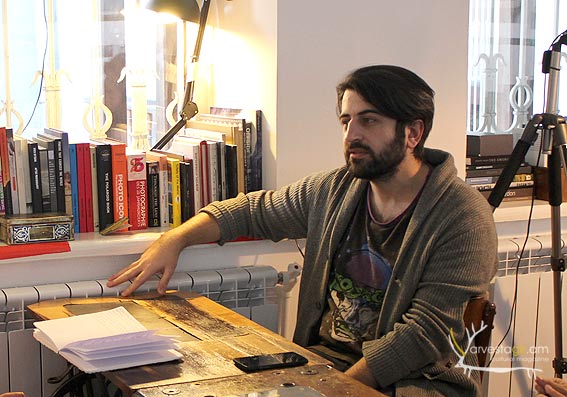 It is very important. If you photograph by digital camera now you cannot do it without Photoshop, even if you take photos by film camera you cannot work without Photoshop as well. You should understand what Photoshop means, its application depends on the field of the photography you are working in. If you work in the advertising photography you can do absolutely everything. If people practice this they learn from their predecessors, old photos, new advertisements, explore Louis Vuitton, Chanel and say “hey, it is so good” and simply by looking they try to copy. This is very good, let them do that, let them grow technically, but they do not know how that photo has been actually done. 99 percent of them consist of three-four photos, there is no photo that has been done by just one shot and has been used by that advertising company. Arman Aghayan has gone deep into Photoshop. He watches very interesting online lectures on this theme and does very good Photoshop. Acturally we do not say Photoshop, we say post-production. The 60-70 percent of shooting done for any company or magazine is done by the post-production, that is why the photographer has 30-40 percent participation in it. The main point is that he/she should say clearly what movement is needed. He/she cannot achieve what these companies need. There are many decisions made after the shooting that concern carrying out some changes in the photos that the photographer cannot execute because the photos are already made. For instance, when the art director phones and says that “we have forgotten that swarthy skin will be fashionable this year”, the post-production simply changes the skin’s color. Besides that, the advertising photos are recast by using Photoshop. Thus, one should know very well how his/her role as a photographer would be. It would never be the chief one there, you would be the second, could be even tertiary, but never the first. The first thing is that you manage to find the right person for working out your photos, in case if you can do it by yourself (for example Arman does it by himself) it is great because the deal of money receives the post-production.
It is very important. If you photograph by digital camera now you cannot do it without Photoshop, even if you take photos by film camera you cannot work without Photoshop as well. You should understand what Photoshop means, its application depends on the field of the photography you are working in. If you work in the advertising photography you can do absolutely everything. If people practice this they learn from their predecessors, old photos, new advertisements, explore Louis Vuitton, Chanel and say “hey, it is so good” and simply by looking they try to copy. This is very good, let them do that, let them grow technically, but they do not know how that photo has been actually done. 99 percent of them consist of three-four photos, there is no photo that has been done by just one shot and has been used by that advertising company. Arman Aghayan has gone deep into Photoshop. He watches very interesting online lectures on this theme and does very good Photoshop. Acturally we do not say Photoshop, we say post-production. The 60-70 percent of shooting done for any company or magazine is done by the post-production, that is why the photographer has 30-40 percent participation in it. The main point is that he/she should say clearly what movement is needed. He/she cannot achieve what these companies need. There are many decisions made after the shooting that concern carrying out some changes in the photos that the photographer cannot execute because the photos are already made. For instance, when the art director phones and says that “we have forgotten that swarthy skin will be fashionable this year”, the post-production simply changes the skin’s color. Besides that, the advertising photos are recast by using Photoshop. Thus, one should know very well how his/her role as a photographer would be. It would never be the chief one there, you would be the second, could be even tertiary, but never the first. The first thing is that you manage to find the right person for working out your photos, in case if you can do it by yourself (for example Arman does it by himself) it is great because the deal of money receives the post-production. 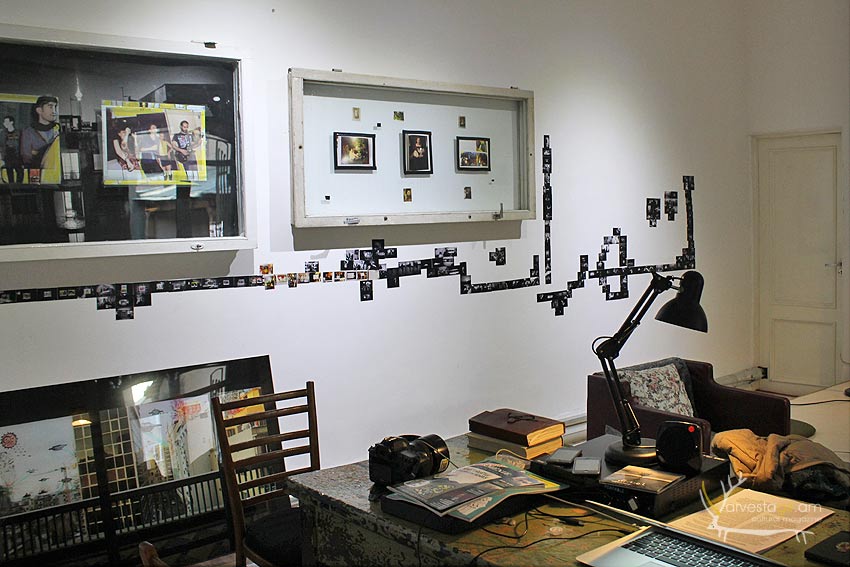 The photographer is the second or the third so there is no need to deepen and to try to photograph something impeccable. There are other rulers in the documentary photography where the difficulties are begun; you cannot recast too much and in the photojournalism you are not allowed to do that at all. For example, if you photograph light you cannot employ the flash even at the afternoon. I photograph with flash at the afternoon. For instance, when I was photographing meetings I used the flash since this way I received a very nice effect. However it is not permitted because Associated Press can say that you distort sun’s natural light, and the viewer cannot understand at what time of the day the photo was made, the flash’s usage reduces the exposure and thus you obtain another light. In the documentary photography you can be freer in the terms of technique. These are academic canons but now I fight against them, when I speak about making my experiments. Previously I did not accept making corrections, like I have not done cropping for 99 percent for ten years, you photograph the way it is and if the photo is not a good one it is the way it is. However now I realized that I want to devote myself to cropping only for a year. By going deeper into the history of photography, investigating the activities of the best documentary photographers, you discern that there were photographers who were cropping their well-known (iconic) images, and you do not even know that those are cropped in reality. Therefore, different photographers have different approaches. For instance, Bresson (Henri Cartier-Bresson) did not crop his photos during his whole life and did not permit the magazines to crop them, that is why his photos were with frames, i.e. the film’s frame was visible. There is also the opposite phenomenon; I photograph with 99 percent 50mm lens like the human eye sees. When the photographing event takes place in distance, and the photographer is far from it as a result of that what is happening looks smaller in scale; a photographer can crop it and display it bigger.I do not do that because I also want the viewer to be able to feel how far I was from the photographing object, event, i.e. everyone does in his/her own way. The photographer can do everything in the respect of Photoshop; he/she can crop, but cannot add and remove; this concerns the black and white photography. In the terms of color you can contrast as much as you want, however not too much indeed. If the color is intensive you can decrease the contrast a bit, but not increase, because this way you delude the viewer. You cannot change the colors. This is a rule, however, there comes a stage when you start to play with the people who view your story. For example, the photo done by me in which the woman’s face is cut is not relevant in any way to the rules of documentary photography, however, it is a pure documentary photo; this woman had a very miserable fate (she was a ballet dancer in Iran and spent many years in prison because of her profession). I communicate, argue with people and tell them that I show a real story and have no right to reveal her face.
The photographer is the second or the third so there is no need to deepen and to try to photograph something impeccable. There are other rulers in the documentary photography where the difficulties are begun; you cannot recast too much and in the photojournalism you are not allowed to do that at all. For example, if you photograph light you cannot employ the flash even at the afternoon. I photograph with flash at the afternoon. For instance, when I was photographing meetings I used the flash since this way I received a very nice effect. However it is not permitted because Associated Press can say that you distort sun’s natural light, and the viewer cannot understand at what time of the day the photo was made, the flash’s usage reduces the exposure and thus you obtain another light. In the documentary photography you can be freer in the terms of technique. These are academic canons but now I fight against them, when I speak about making my experiments. Previously I did not accept making corrections, like I have not done cropping for 99 percent for ten years, you photograph the way it is and if the photo is not a good one it is the way it is. However now I realized that I want to devote myself to cropping only for a year. By going deeper into the history of photography, investigating the activities of the best documentary photographers, you discern that there were photographers who were cropping their well-known (iconic) images, and you do not even know that those are cropped in reality. Therefore, different photographers have different approaches. For instance, Bresson (Henri Cartier-Bresson) did not crop his photos during his whole life and did not permit the magazines to crop them, that is why his photos were with frames, i.e. the film’s frame was visible. There is also the opposite phenomenon; I photograph with 99 percent 50mm lens like the human eye sees. When the photographing event takes place in distance, and the photographer is far from it as a result of that what is happening looks smaller in scale; a photographer can crop it and display it bigger.I do not do that because I also want the viewer to be able to feel how far I was from the photographing object, event, i.e. everyone does in his/her own way. The photographer can do everything in the respect of Photoshop; he/she can crop, but cannot add and remove; this concerns the black and white photography. In the terms of color you can contrast as much as you want, however not too much indeed. If the color is intensive you can decrease the contrast a bit, but not increase, because this way you delude the viewer. You cannot change the colors. This is a rule, however, there comes a stage when you start to play with the people who view your story. For example, the photo done by me in which the woman’s face is cut is not relevant in any way to the rules of documentary photography, however, it is a pure documentary photo; this woman had a very miserable fate (she was a ballet dancer in Iran and spent many years in prison because of her profession). I communicate, argue with people and tell them that I show a real story and have no right to reveal her face. 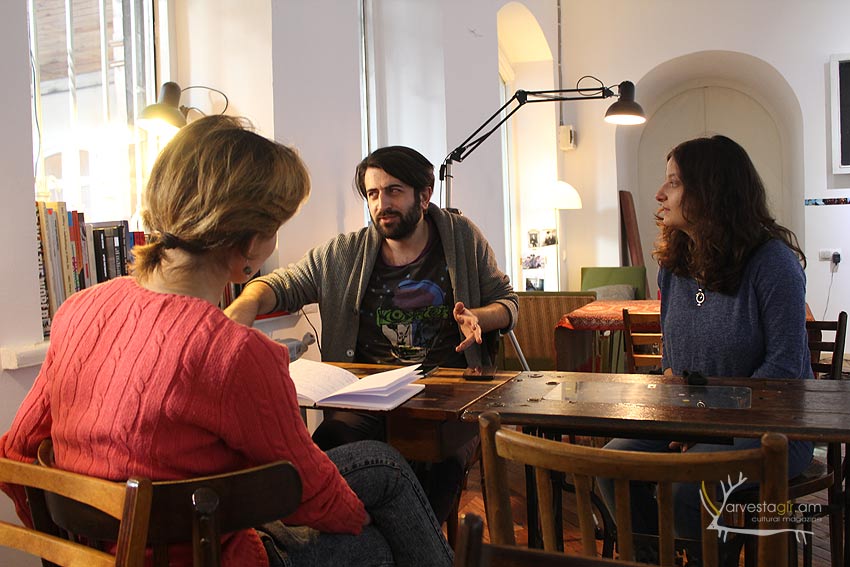 There are means that I applied to my two or three series; I photographed portraits without their faces’ representation, with long exposure and blurring. Then there came a time when I realized that I want to do a post-production. You always want to do something new, to make changes but there are things that are permitted to do and the ones that are not. Nowadays you cannot do without Photoshop, because in every digital camera there is a specific software and you can choose whether the photo needs more contrast or less, higher or lower saturation. You already do in some extent things that are not allowed, especially for those who do not accept Photoshop. Now for example, I photograph all my black and white photos with 0, -2 or -3 contrast, since when you make a photo without a contrast there is much more information left, and then you can elaborate it rightly. That is why all my photos are in grey, it is not because I cannot make them look nicely, but because I need good information in order to use it better, like after ten years with another program. Thus it could be said that Photoshop is applicable, one just needs to know what he/she does; there is no formula.
There are means that I applied to my two or three series; I photographed portraits without their faces’ representation, with long exposure and blurring. Then there came a time when I realized that I want to do a post-production. You always want to do something new, to make changes but there are things that are permitted to do and the ones that are not. Nowadays you cannot do without Photoshop, because in every digital camera there is a specific software and you can choose whether the photo needs more contrast or less, higher or lower saturation. You already do in some extent things that are not allowed, especially for those who do not accept Photoshop. Now for example, I photograph all my black and white photos with 0, -2 or -3 contrast, since when you make a photo without a contrast there is much more information left, and then you can elaborate it rightly. That is why all my photos are in grey, it is not because I cannot make them look nicely, but because I need good information in order to use it better, like after ten years with another program. Thus it could be said that Photoshop is applicable, one just needs to know what he/she does; there is no formula.
To what extent is the photography developed in Armenia in comparison with other countries from our region?
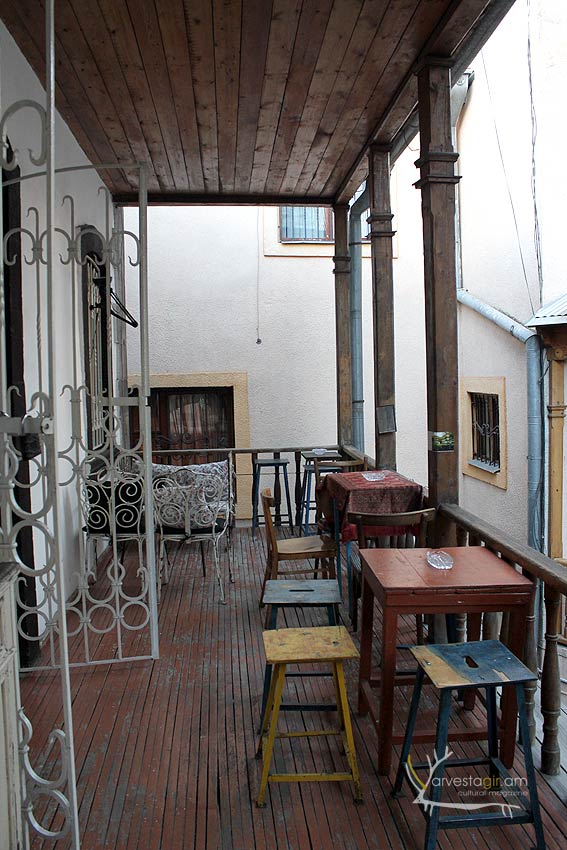 Well, it is very different, it will be wrong if I praise; I do not like when it is said that we are talented nation, however, in my opinion in any case there is something interesting in Armenians. There are interesting phenomena taking place in Georgia; they have a very good technique, a good geographical position, besides that, since they were in war with Russia and this process continues till now, all organizations concerning the photography open their offices in Tbilisi. It is also the most convenient place where Azerbaijan and Armenian photographers can gather all together. Magnum foundation gathers there, they have published their Magnum’s book there as well.Thomas Dworzak who is from the foundation was living there, and they opened a festival where the world’s best photographers were coming and having lectures, also having exhibitions what is absolutely absent in Armenia. And this is the most important thing; now I try to do exactly that but what I do is only 5 percent of the required work. Though Georgians had problems from the last year because Dworzak is moving to Iran and the developing trend is getting weaker in Georgia, i.e. after creating so much, no photographers have shaped there, but they became the photo center of Caucasus, which was 8-9 years before in Yerevan. The Caucasus Media Center was working in Yerevan, where Ruben Mangasaryan and I were teaching; this was a very important center, because World Press Photo was supporting us, which office is now in Tbilisi, also people were coming from abroad to study here, for instance from Spain, Russia, Belorussia, Arabian countries, among them were as Armenians, as people of other nationalities. Our institute has already become a very strong center. Besides that, we organized exhibitions; we have done exhibitions here with World Press Photo for two years. Then, after the institute was closed, Tbilisi at once rapidly developed. As talented and well-known photographers now we can mention Azerbaijan photographers, for example Rena Effendi. He is a very good photographer, and we have worked and had exhibitions together abroad. He does not live in Azerbaijan now. Ilkin (Ilkin Huseynov) who lives in Spain now, has moved there recently. There is a strong support in Azerbaijan, I do not know to which finances it is related, however, the government strongly supports even the photographers from the opposition. For example, Ilkin is not pro-governmental at all. He has a movie related to Nagorno-Karabakh conflict where there is no bad word concerning Armenians. It is about the war, and he criticizes more Aliyev’s family, which has not been able to provide people with well-to-do life after the war and as far as I know he travels frequently abroad due to Aliyev’s foundations finances.
Well, it is very different, it will be wrong if I praise; I do not like when it is said that we are talented nation, however, in my opinion in any case there is something interesting in Armenians. There are interesting phenomena taking place in Georgia; they have a very good technique, a good geographical position, besides that, since they were in war with Russia and this process continues till now, all organizations concerning the photography open their offices in Tbilisi. It is also the most convenient place where Azerbaijan and Armenian photographers can gather all together. Magnum foundation gathers there, they have published their Magnum’s book there as well.Thomas Dworzak who is from the foundation was living there, and they opened a festival where the world’s best photographers were coming and having lectures, also having exhibitions what is absolutely absent in Armenia. And this is the most important thing; now I try to do exactly that but what I do is only 5 percent of the required work. Though Georgians had problems from the last year because Dworzak is moving to Iran and the developing trend is getting weaker in Georgia, i.e. after creating so much, no photographers have shaped there, but they became the photo center of Caucasus, which was 8-9 years before in Yerevan. The Caucasus Media Center was working in Yerevan, where Ruben Mangasaryan and I were teaching; this was a very important center, because World Press Photo was supporting us, which office is now in Tbilisi, also people were coming from abroad to study here, for instance from Spain, Russia, Belorussia, Arabian countries, among them were as Armenians, as people of other nationalities. Our institute has already become a very strong center. Besides that, we organized exhibitions; we have done exhibitions here with World Press Photo for two years. Then, after the institute was closed, Tbilisi at once rapidly developed. As talented and well-known photographers now we can mention Azerbaijan photographers, for example Rena Effendi. He is a very good photographer, and we have worked and had exhibitions together abroad. He does not live in Azerbaijan now. Ilkin (Ilkin Huseynov) who lives in Spain now, has moved there recently. There is a strong support in Azerbaijan, I do not know to which finances it is related, however, the government strongly supports even the photographers from the opposition. For example, Ilkin is not pro-governmental at all. He has a movie related to Nagorno-Karabakh conflict where there is no bad word concerning Armenians. It is about the war, and he criticizes more Aliyev’s family, which has not been able to provide people with well-to-do life after the war and as far as I know he travels frequently abroad due to Aliyev’s foundations finances.
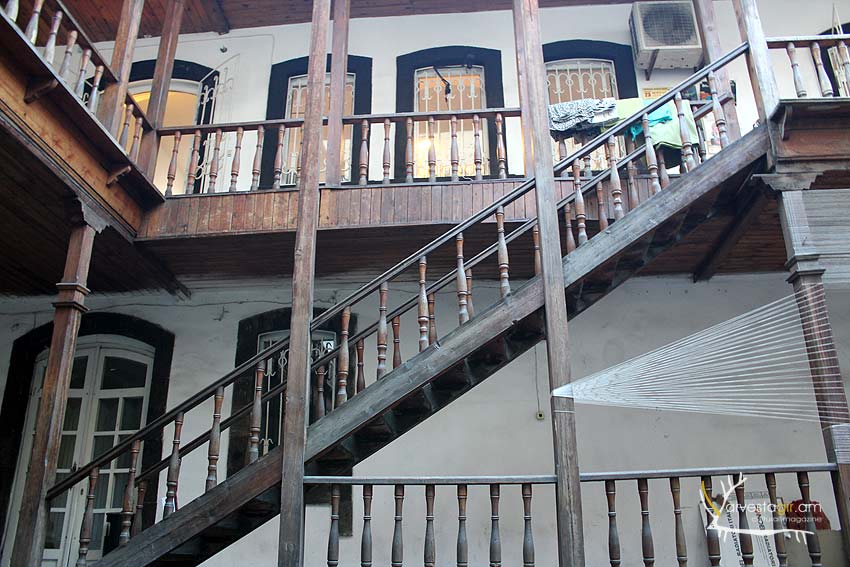 Armenia, Yerevan seems like technically equipped, however, we are not going forward. If we go deeper into Caucasian photographers I should say that there is a photographer in Tbilisi now who in my view is the strongest and she is Armenian, I would like to invite her here, Dina Oganova. Before her there was another famous photographer there; Yuri Mechitov, who is Armenian by his roots as well. Mechitov is the photographer, who has photographed the famous image of jumping Sergei Paradjanov. Dina is Mechitov’s student, and it could be said that Mechitov is considered as the father of Georgian photography and Dina follows him.
Armenia, Yerevan seems like technically equipped, however, we are not going forward. If we go deeper into Caucasian photographers I should say that there is a photographer in Tbilisi now who in my view is the strongest and she is Armenian, I would like to invite her here, Dina Oganova. Before her there was another famous photographer there; Yuri Mechitov, who is Armenian by his roots as well. Mechitov is the photographer, who has photographed the famous image of jumping Sergei Paradjanov. Dina is Mechitov’s student, and it could be said that Mechitov is considered as the father of Georgian photography and Dina follows him.
Unfortunately, we do not have any organizations that can support the photographers. i.e. Georgians have more advantages because they have organizations for the photographers, for example, Associated Press and Reuters have their offices in Tbilisi and they hire one or two photographers who work with high wages. When there is a meeting in Armenia or any important event, Georgians come and photograph it for the whole world. This is already an advantage. There is also The House of Photography in Tbilisi.They have worked a lot and due to that they move in the right direction and receive a great support from other countries. This affects in general the quality of the photographers contributing to the growth of them, etc. But it is difficult for me to mention other photograph whom I like and who is able to succeed abroad. Dina can, however, in my view she is not as strong as Rena and Ilkin and should grow yet. Indeed, she makes very beautiful photos, properly but Rena and Ilkin make one-up strong photos. Rena received two World Press Photo awards last year.
Thank you for an interesting and informative interview.
Mirzoyanphoto library works from Monday to Sunday from 4 p.m. to 12 a.m.
Translated from Armenian.
Translated from armenian by author.
[1]https://www.youtube.com/watch?v=sS1TY725lL0
Co-Author
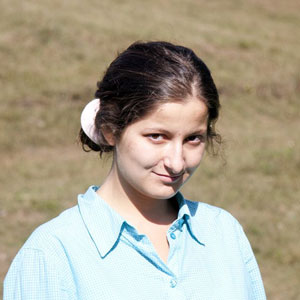 Anahit Galstyan
Anahit Galstyan
Art historian





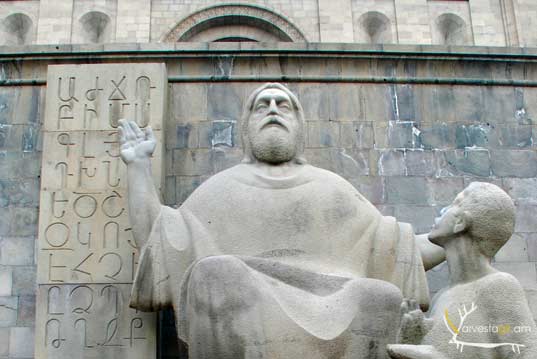
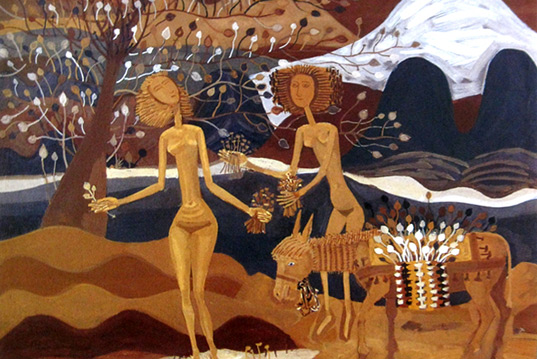

Leave a Reply